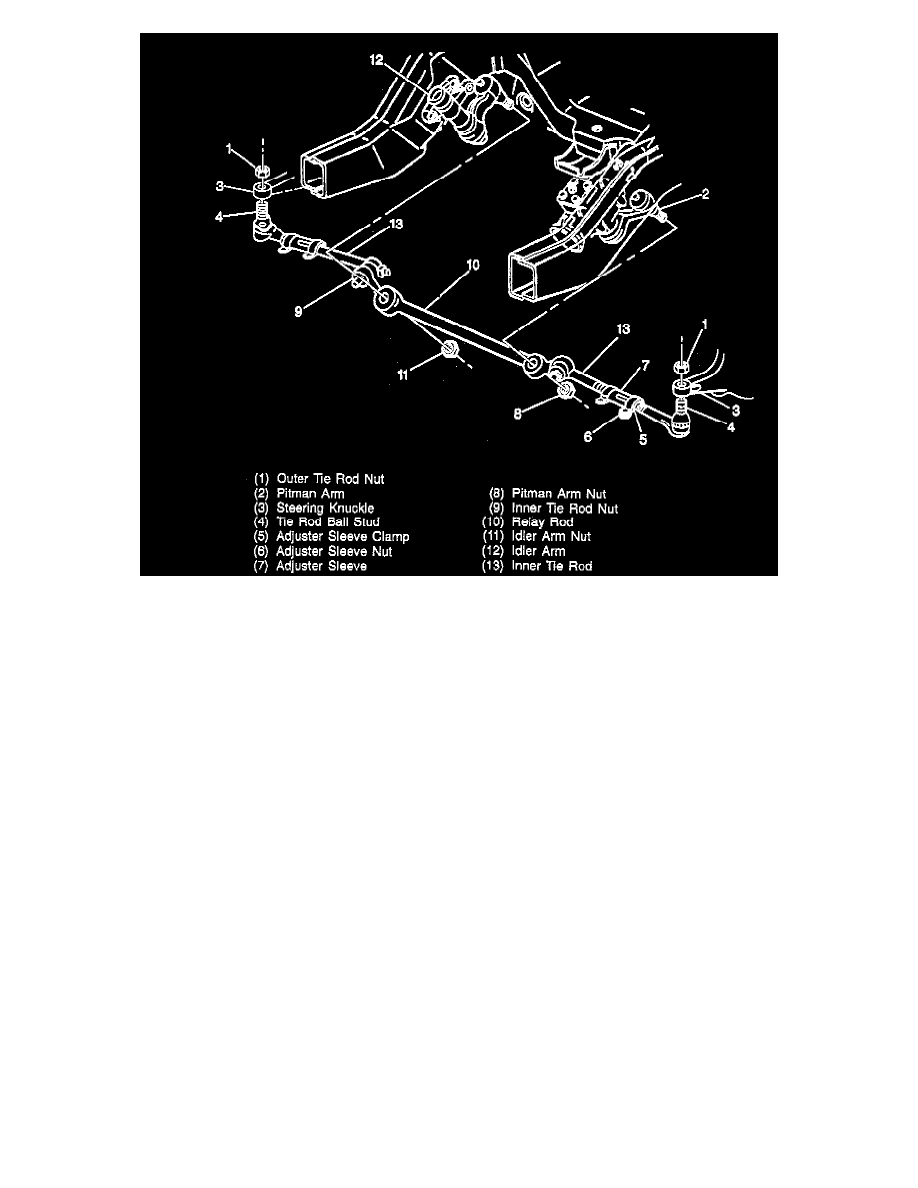C 2500 Truck 2WD V8-6.5L DSL Turbo VIN S (1997)

Remove or disconnect the following:
1. Idler arm frame bolts and nuts.
2. Idler arm ball stud nut. Do not reuse the nut.
3. Idler arm from the relay rod. Use J 24319-01.
4. Inspect for the following:
-
Ball stud threads for damage.
-
Ball stud seal for cuts or other damage.
5. Clean the threads on the ball stud.
INSTALLATION
CAUTION: Always use the correct fastener in the proper location. When you replace a fastener, use ONLY the exact part number for that
application. The manufacturer will call out those fasteners that require a replacement after removal. The manufacturer will also call out the fasteners
that require thread lockers or thread sealant. UNLESS OTHERWISE SPECIFIED, do not use supplemental coatings (paints, greases, or other
corrosion Inhibitors) on threaded fasteners or fastener joint interfaces. Generally, such coatings adversely affect the fastener torque and joint clamping
force, and may damage the fastener. When you install fasteners, use the correct tightening sequence and specifications. Following these instructions
can help you avoid damage to parts and systems.
NOTE: Position the idler arm mounting bracket on the frame.
Install or connect the following:
1. Frame bolts arid nuts to the idler arm.
a. Tighten to 99 Nm (73 ft. lbs.).
b. Tighten relay rod to the idler arm ball stud. Make sure the seal is on the stud. Tighten tool J 29193 or J 29194 to 54 Nm (40 ft. lbs.) to seat the
tapers. Remove the tool.
3. New prevailing torque nut to the idler arm ball stud. Tighten to 62 Nm (46 ft. lbs.).
4. Lower the vehicle.
5. Adjust Toe-in if necessary.
